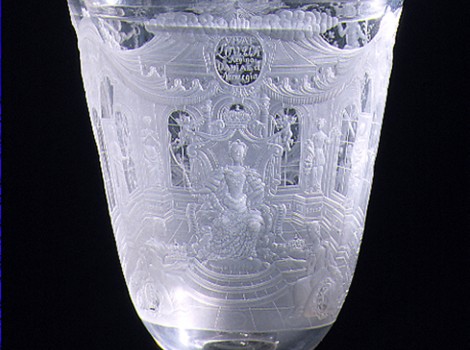Lidded standing cup with cameos and intaglios
Gold, enamel, semi-precious stones.
The Renaisance had revived antiquity’s lapidary art and prized each and every cameo or intaglio as a separate work of art. After 1600 the quality declined, and was replaced by a decorative serial production.
This display cup combines the unique with craftsman-like repetition. The motifs are the good emperors of antiquity, the rulers of the European Renaissance and themes from mythology. The colours of the enamelling, and its exotic flowers, animals, birds and fruit, date the cup to 1635-50. (The Moor and the dragon on the stem from c.1610 are re-used pieces.) The enmalling may have been made in the Netherlands and the stone carved in Prague, but the exact place of origin is unknown. The cup, wich belonged to the Dukes of Holstein, was a Danish spoil of war and was found in a strongbox in an underground vault at Gottorp Palace in 1732. After having it restored Christian VI sent it to the Green Cabinet in 1736.

 Dansk
Dansk
 English
English
 Deutsch
Deutsch









